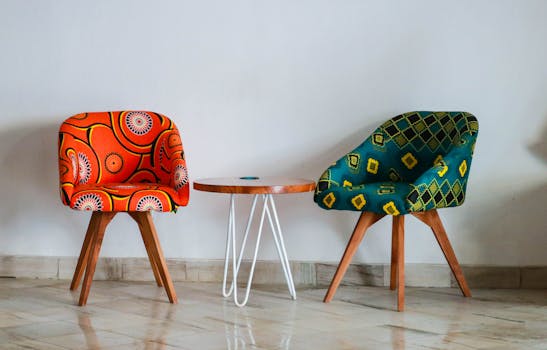Add Depth to Rooms by Intelligently Arranging Furniture
Creating a visually appealing and functional space is an art that requires careful consideration of furniture arrangement. The way furniture is positioned can significantly impact the depth and overall ambiance of a room. This article explores various strategies to enhance room depth through intelligent furniture arrangement, providing insights, examples, and practical tips.
The Importance of Furniture Arrangement
Furniture arrangement is not merely about placing items in a room; it plays a crucial role in defining the space’s functionality and aesthetic appeal. A well-thought-out arrangement can:
- Enhance the flow of movement within the room.
- Create focal points that draw the eye.
- Maximize the use of space, making it feel larger and more inviting.
- Encourage social interaction and comfort.
According to a study by the American Society of Interior Designers, 90% of homeowners believe that furniture arrangement significantly affects their mood and productivity. This statistic underscores the importance of thoughtful design in our living spaces.
Understanding Room Dimensions and Layout
Before diving into furniture arrangement, it is essential to understand the dimensions and layout of the room. Here are some key considerations:
- Measure the Space: Accurate measurements of the room and furniture are crucial. This helps in visualizing how different pieces will fit together.
- Identify Focal Points: Every room should have a focal point, such as a fireplace, a piece of art, or a large window. Arranging furniture around this point can create depth.
- Consider Traffic Flow: Ensure that pathways are clear and that movement through the room is unobstructed. This is particularly important in high-traffic areas.
Layering Furniture for Depth
Layering furniture is a powerful technique to add depth to a room. This involves using various furniture heights, sizes, and styles to create visual interest. Here are some effective layering strategies:
- Mixing Heights: Combine tall bookshelves with low coffee tables to create a dynamic visual landscape.
- Using Area Rugs: Define spaces within a room by using area rugs. This can help separate different functional areas, such as a reading nook or a conversation area.
- Incorporating Accessories: Use decorative items like vases, books, and art pieces to add layers and textures that enhance depth.
For example, in a living room, placing a tall plant next to a low sofa can create a sense of height and dimension, making the space feel more inviting.
Creating Zones Within a Room
Another effective way to add depth is by creating distinct zones within a room. This is particularly useful in open-concept spaces. Here’s how to do it:
- Use Furniture to Define Areas: Position sofas and chairs to create a conversation area, while a dining table can define the eating space.
- Incorporate Dividers: Use bookshelves or screens to separate different zones without closing off the space.
- Varying Textures and Colors: Different textures and colors can visually separate areas, making each zone feel unique yet cohesive.
For instance, a living room with a cozy reading nook can be created by placing a comfortable chair and a small side table in one corner, distinct from the main seating area.
Case Studies: Successful Furniture Arrangements
Several interior design projects exemplify the power of intelligent furniture arrangement. One notable case is the redesign of a small New York City apartment. The designer utilized:
- Multi-functional furniture, such as a sofa bed and nesting tables, to maximize space.
- Mirrors to reflect light and create an illusion of depth.
- Strategic placement of furniture to create a flow that guides visitors through the space.
This approach not only made the apartment feel larger but also more inviting and functional.
Conclusion
Intelligently arranging furniture is a vital aspect of interior design that can dramatically enhance the depth and functionality of a room. By understanding room dimensions, layering furniture, creating zones, and learning from successful case studies, anyone can transform their living space into a more inviting and aesthetically pleasing environment. Remember, the key is to balance functionality with visual appeal, ensuring that every piece of furniture contributes to the overall harmony of the room. With these strategies in mind, you can create spaces that are not only beautiful but also deeply engaging.
